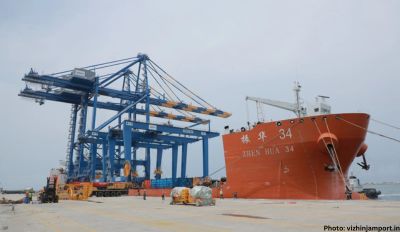The wave of job losses that have struck the tech industry since the beginning of the year has forced tens of thousands of H1-B Visa holders to scramble to find new employment within 60 days or risk deportation. For those who acted quickly, the deadline has come and gone. Fortunately, the majority of them were successful.
At Revelio Labs, where we collect publicly accessible workforce data to analyze labor trends, we discovered that over 90% of laid-off H1-B visa holders managed to secure new jobs that met the program’s strict requirements. Interestingly, compared to native workers, immigrants found jobs 10 days quicker, primarily because they were more willing to relocate for new opportunities. However, their flexibility is limited, as visa holders can only accept positions directly related to their specialized training.
Indeed, our research showed that while 67% of non-immigrant workers changed roles after being laid off, only 49% of visa holders did the same. So, how did so many manage to find positions in their specialty despite Big Tech’s drastic cost-cutting measures? The answer lies in market demand.
Tech jobs remain widely available outside of tech companies. Consequently, the stars aligned for laid-off tech workers on H1-B visas, as numerous other doors were open. The H1-B Visa program functions best when it enables participants to adapt seamlessly to market demand, but it is not inherently responsive to market needs. Revelio Labs’ data reveals that 78% of Fortune 500 companies currently have critical roles unfilled for six months or more – a situation that could be improved with greater flexibility in the H1-B visa program and better collaboration between public and private sectors to direct qualified talent where it is most needed.
Despite ongoing layoffs, labor shortages persist. Revelio Labs found that over 43.4% of companies had more than 50 technical positions they were unable to fill in the past year, accounting for 68.8% of approved H-1B visa holders in 2021.
Our visa allocation system, which could otherwise provide a dependable talent pipeline to fill open roles and attract the best candidates globally, is hindered by restrictions that limit visa holders’ mobility in a market that demands flexibility. A truly market-sensitive visa allocation system would enable companies to obtain the staff they need, ultimately stabilizing the workforce, reducing talent shortage costs, and bridging skills gaps – projected to result in a loss of up to $162 billion by 2030.
One of the most criticized and harmful aspects of the H1-B visa process is the annual cap of 65,000 visas (plus an additional 20,000 for U.S. graduate degree holders), which has remained unchanged since the program’s inception over two decades ago. In 2023 alone, this meant that over 483,000 applicants were rejected despite millions of job openings.
This isn’t the first time demand has exceeded this limited supply. Between 2008 and 2020, the cap was reached within the first five business days of opening the application on several instances. Last year, visa registrations increased by 56.8%.
To address the millions of vacant roles, we need adaptable, market-sensitive visa policies to regulate foreign labor flow rather than arbitrary and outdated federal restrictions.
Local municipalities are best suited to determine the number of foreign workers they can accommodate. Companies spend $5,000 to $10,000 more to hire H1-B visa holders than U.S. citizens. Instead of investing time and resources in a federal system that may or may not meet a company or community’s talent needs, companies could pay municipalities where their foreign worker resides and receive a guaranteed visa in return. This arrangement would benefit both companies and municipalities.
Chicago provides a glimpse of what might happen if municipalities were empowered to manage foreign worker hiring. The city recently initiated a coordinated effort between 35 firms willing to hire H1-B visa holders and a nonprofit organization to create a specialized job listing website advertising these jobs as H1-B visa sponsorships. This public-private partnership aims to fill over 400,000 open positions by tapping into the pool of tech sector workers laid off while on a visa. It’s an excellent starting point and a model that would be even more scalable and sustainable if the revenue from companies covering visa application costs went back to the city rather than the federal government.
The recent headlines about massive layoffs in Silicon Valley have left thousands of H-1B visa holders in a precarious position, with only 60 days to secure new opportunities before facing potential deportation. The upheaval caused by such instability is immense, and if we don’t find improved ways to support and retain foreign talent, we risk losing these skilled workers to their home countries or to other nations with more welcoming immigration policies, such as Canada, New Zealand, or Switzerland. This loss of talent will undoubtedly have far-reaching implications for both our local communities and America’s standing in the global economy.
While we’ve made significant progress in addressing discriminatory hiring practices based on race, religion, or gender, our current visa system still allows geographical factors to unfairly hinder even the most qualified candidates. If we were to prioritize market forces and merit over a lottery system when deciding which foreign laborers to welcome, we’d likely see a decrease in job vacancies and an increase in contributions from top talent worldwide to our workforce and communities.
Failing to hire and retain exceptional non-native talent gives our international competitors an advantage that was once America’s greatest strength. Although the complexities of U.S. immigration policy require numerous reforms to better serve our economic interests, the stakes are too high to continue hindering our own progress. Addressing this issue will enable companies to acquire the talent they need, promote city growth, and ultimately create a more efficient and equitable workforce.











